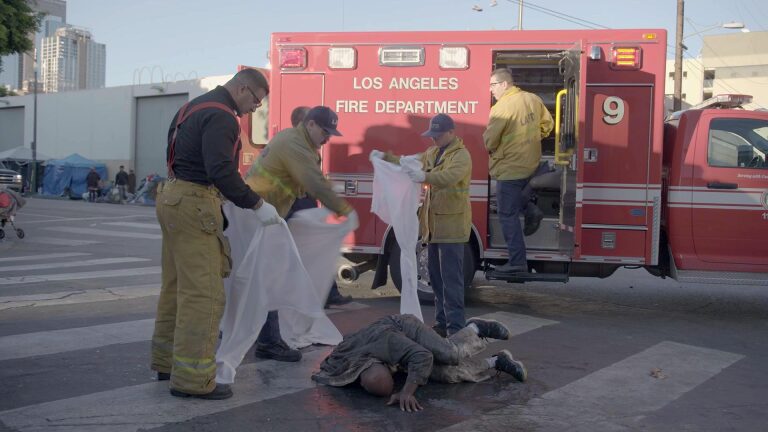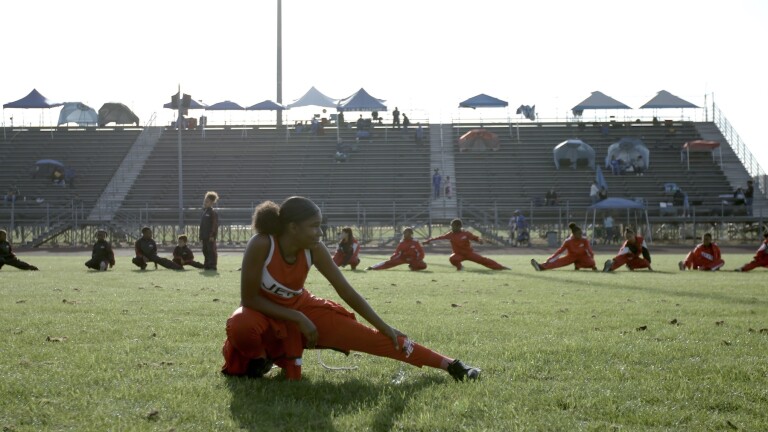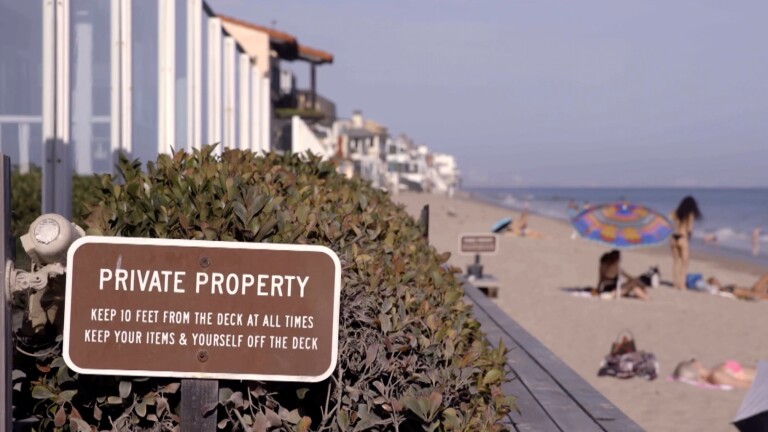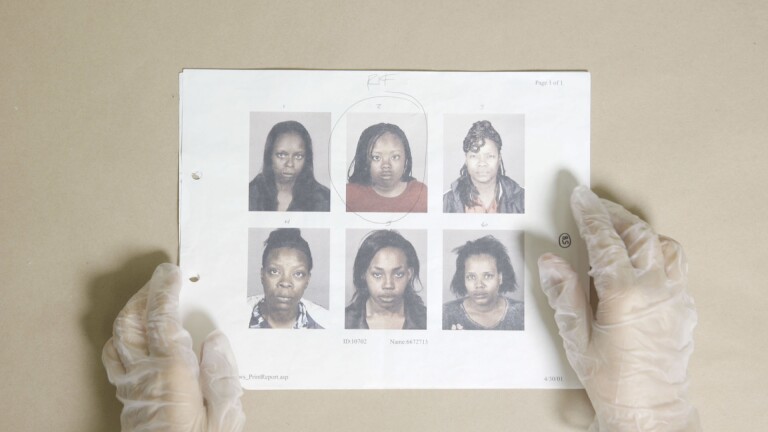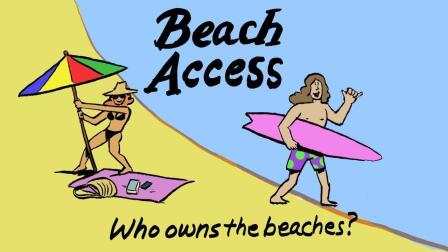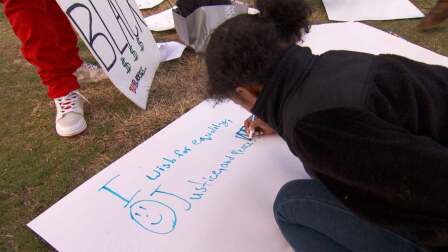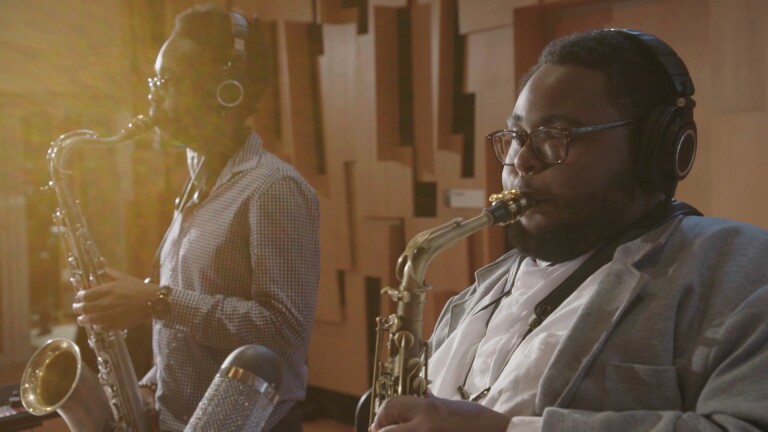
The Rise of Silicon Beach
"SoCal Connected" presents an in-depth look at the growth of Silicon Beach. Silicon Beach is home to more than 500 tech startups along with incubators and accelerators. Big tech firms including YouTube, Google, Yahoo, BuzzFeed and Snapchat and flocked to the beach cities of Santa Monica, Playa Vista and Venice. But what makes Silicon Beach distinct from Silicon Valley is the confluence of hi-technology and the entertainment industry. In the first segment of this half-hour special, "SoCal Connected "reporter, Cara Santa Maria, talks with Liam Collins, head of YouTube in LA; Brett Bouttier, President of AwesomenessTV, and one of its digital stars, Hunter March about the new model for success in digital entertainment.
In the 2nd segment of our special, Cara Santa Maria looks at the lack of diversity in the high-tech industry. Studies show Silicon Valley hi-tech workforce is predominantly white and male. Will that be the case as LA’s tech sector develops? "SoCal Connected" visits a hackathon in South Gate where a diverse group of young people are learning app development skills. We meet Gregorio Rojas the co-founder of a coding academy that is preparing young people of color to be part of the high-tech boom. We visit “Mitu” a successful digital media company that produces content for the growing Latino audience founded by Beatriz Acevedo, who says online media is giving Latino talent new routes to success.
In the 3rd and final segment of our special, Cara Santa Maria explores the impact that hi-tech companies are having on Venice, in particular Oakwood, a historically African-American neighborhood. Venice has been known as the ‘affordable Santa Monica.’ But over the past few years home prices have soared. Long-time residents blame the influx of hi-tech companies like Snapchat. They are angry about the rising home prices and the McMansions that disrupt Oakwood’s character. But newcomers from Silicon Valley find job opportunities plentiful, housing relatively affordable. We meet a real estate agent and her client, talk with the long-time owner of a landmark business, and meet members of the organization “Save Venice” who are fighting effects of gentrification in an effort to save the Venice they know and love.
Transcript
Cara Santa Maria: As dawn breaks over Venice Beach, California, a hardy band of techies are up with the sun. Surfing waves, not the web.
Robert Lambert: You’ve got Amazons, you've got the Ubers, Twitters, multichannel network companies, pretty much any local company younger than five years.
Cara Santa Maria: They’re members of the Silicon Beach Surfers, taking a wave and a meeting about the exploding Los Angeles tech sector.
Robert Lambert: Silicon Beach is the umbrella brand for the LA tech and startup community, so the main epicenter being the Venice-Santa Monica area. But the way I explain it is, if you live closer to LA than you do to San Francisco to the north, uh, Vegas to the east, and Mexico to the south, you're still Silicon Beach LA.
Kara Nortman: I dislike the word Silicon Beach because I think it creates this isolated view of what we think LA is all about. LA is so much more than that. That’s a piece of LA.
Cara Santa Maria: Kara Nortman is a partner at Upfront Ventures, the top venture capital firm investing in the LA tech scene.
Kara Nortman: Obviously we're the media and creative capitol of the world. One in every six people here is in a creative job. We actually graduate the largest number of engineering students out of any region in the country. We sort of think of LA as more like, LA tech.
Cara Santa Maria: Kara focuses on startups with strong female leadership, like Seedling, an educational toy company, of which she’s also chairman. Seedling’s CEO, Phoebe Hayman, shows me how to use one of their products.
Phoebe Hayman: So this is our latest product, which is called maze.
Cara Santa Maria: Okay.
Phoebe Hayman: But the magic to this is that you’re designing this obviously in a tactile way, but what we want to do is to be able to transport you into this. So you’re literally in your maze.
Cara Santa Maria: I’m in my maze, and then I’ve gotta turn so I don’t hit the wall. Ah! This is amazing!
Cara Santa Maria: While it may be up for debate who first scooped Northern California’s “Silicon Valley” nom de tech, it’s clear just why the term “Silicon Beach” made its way down to SoCal--as hundreds of tech startups and more established tech companies have made the westside their home, like Google, YouTube, and Snapchat.
Chris Rico: In 2012 there was 319 million dollars’ worth of venture capital. In the last two years, it’s gone over 3 billion both years.
Cara Santa Maria: LA Native Chris Rico, a director with the Los Angeles Economic Development Corporation, spent four years in Silicon Valley.
Cara Santa Maria: Is the really big money still in Silicon Valley?
Chris Rico: Of course the really big money is still in Silicon Valley. However, every single one of those venture capital firms has a foothold here. They're paying attention. San Francisco became this one conversation town: ‘what app are you building?’ And I came back to Los Angeles and it's changed--it's so dynamic.
Cara Santa Maria: What changed the dynamic? Smartphones and digital technology coupled with the culture and resources of Hollywood, giving rise to a digital studio revolution in LA.
Chris Rico: Because of the legacy of Hollywood, there's a permission to fail here. People come here to make it as actors and directors and writers and they fail constantly and they keep going.
Cara Santa Maria: And going...and going...more than ever, thanks to YouTube.
Cara Santa Maria: YouTube was both pioneer and catalyst, fueling an insatiable hunger for user-generated web content.
YouTuber: Subscribe to my channel. Bye!
Cara Santa Maria: In 2008, Playa Vista saw an influx of tech companies setting up shop. Four years later, YouTube opened its first studio in Playa Vista, in an old helicopter fabrication facility at the Howard Hughes Airport.
Liam Collins: Our hope was that if we put our flag down in Playa Vista, other companies would, and today, there is almost no available space in the neighborhood.
Cara Santa Maria: Liam Collins is the head of YouTube Space LA.
Cara Santa Maria: How do you think these quintessential silicon beach companies like YouTube have changed the media landscape and the way we consume content?
Liam Collins: I’m not the first person to say this--it’s become much more democratic, obviously. I think it was an audience trend in the beginning. People were consuming media in places they hadn't done it before, but now businesses are developing around that.
Cara Santa Maria: One such business is Maker Studios. It was recently sold to Disney for a staggering half a billion dollars, giving the legacy media giant a boost in the digital space.
Piewtie Pie: My name is Piewtie Pie!
Cara Santa Maria: More and more, young people are leaving the cable box behind and looking to their handheld devices for entertainment. And Hollywood is taking notice.
Liam Collins: One of the smartest things that any content creator can do is find an audience everywhere that it exists.
Cara Santa Maria: Silicon Beach culture is one of consumer-driven content.
Cara Santa Maria: And who is that consumer? Forget millennials--this is the age of Generation Z: kids who grew up never knowing life without a smartphone.
Brett Bouttier: You take a 17 year-old kid, and they are now not just watching their smartphone or paying attention to their smartphone while they’re watching TV, they’re getting their TV on their smartphone. The major media companies out there, the major studios, the networks are not really programming to this audience in the way that they consume.
Cara Santa Maria: Brett Bouttier is the President of AwesomenessTV, a four year-old media company with about a billion views a month on YouTube. It’s reportedly valued at 650 million dollars, and it’s now owned by Hearst, Comcast, and Verizon.
Brett Bouttier: The whole business, as it always has, revolves around talent--talent who write, direct, and then of course, star.
Cara Santa Maria: The Gen Z celebrities are part of a whole new social register, embraced not only for their talent, but for their reach on social media.
Brett Bouttier: They have a big audience that they talk to and react with every day. The stars are celebrities that have been homegrown on these platforms. So, we’re finding them on YouTube, we’re finding them on Snapchat, we’re finding them on Twitter and Facebook and Instagram.
Cara Santa Maria: Despite the talk of sharp differences between new media and old, AwesomenessTV still produces more traditional TV shows and movies.
Actor: Welcome to Dance camp.
Brett Bouttier: There’s a lot of things in those business models that we borrow and use, and we’re not throwing the baby out with the bathwater.
Hunter March: Three, Two, One!
Cara Santa Maria: One of AwesomenessTV’s biggest stars is 25 year-old Hunter March.
Hunter March: This is Top Five Live!
Cara Santa Maria: Hunter hosts “Top Five Live,” a daily countdown show focused on digital celebrities that’s exclusively offered through an app called “Go Ninety.”
Hunter March: There was no TV companies that were willing to hire me, yet this internet company was willing to hire me right away.
Hunter March: I’m am like the sweet potato. Perfect.
Cara Santa Maria: Like many YouTube stars, Hunter got his start by uploading a homemade video.
Hunter March: I had a video that had a 100,000 views, and then another one with like 50,000 views.
Cara Santa Maria: Hunter is the grandson of Hal March, host of the popular 1950s TV show, the 64,000 Dollar Question.
Hal March: Good evening everyone. It's a very exciting evening.
Cara Santa Maria: Hunter seems to be channeling some of grandpa’s talent, but with a decidedly more modern twist.
Hunter March: We don't have budgets for promotion, like a TV show has commercials, they have billboards. We don’t have any of that--we have social media.
Hunter March: I’ve been getting a lot of comments and tweets asking for more “guy advice.” So, I decided to start a weekly series where I answer those questions, called Dear Hunter.
Hunter March: The secret sauce to everything we do is, we're their friend. And they're our friend. And it creates this relationship that goes into everything we do.
Cara Santa Maria: These creative visionaries, who serve as both your biggest idol and your best friend, will be riding this wave as long as they can.
Surfer: People see it as this great opportunity to bring ideas and talent to our wonderful area of Southern California and to this exciting movement that's happening specifically on the Westside.
Cara Santa Maria: And that’s what makes Silicon Beach so special. The promise of a rising tide of determination and opportunity. I'm Cara Santa Maria for "SoCal Connected."

